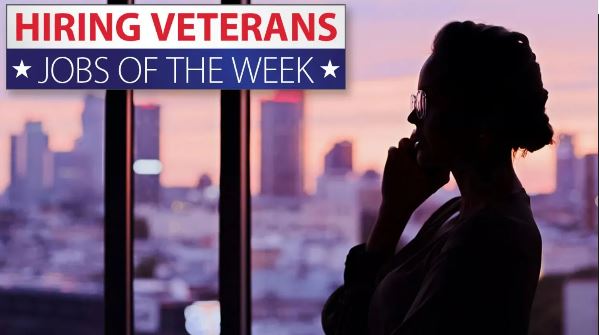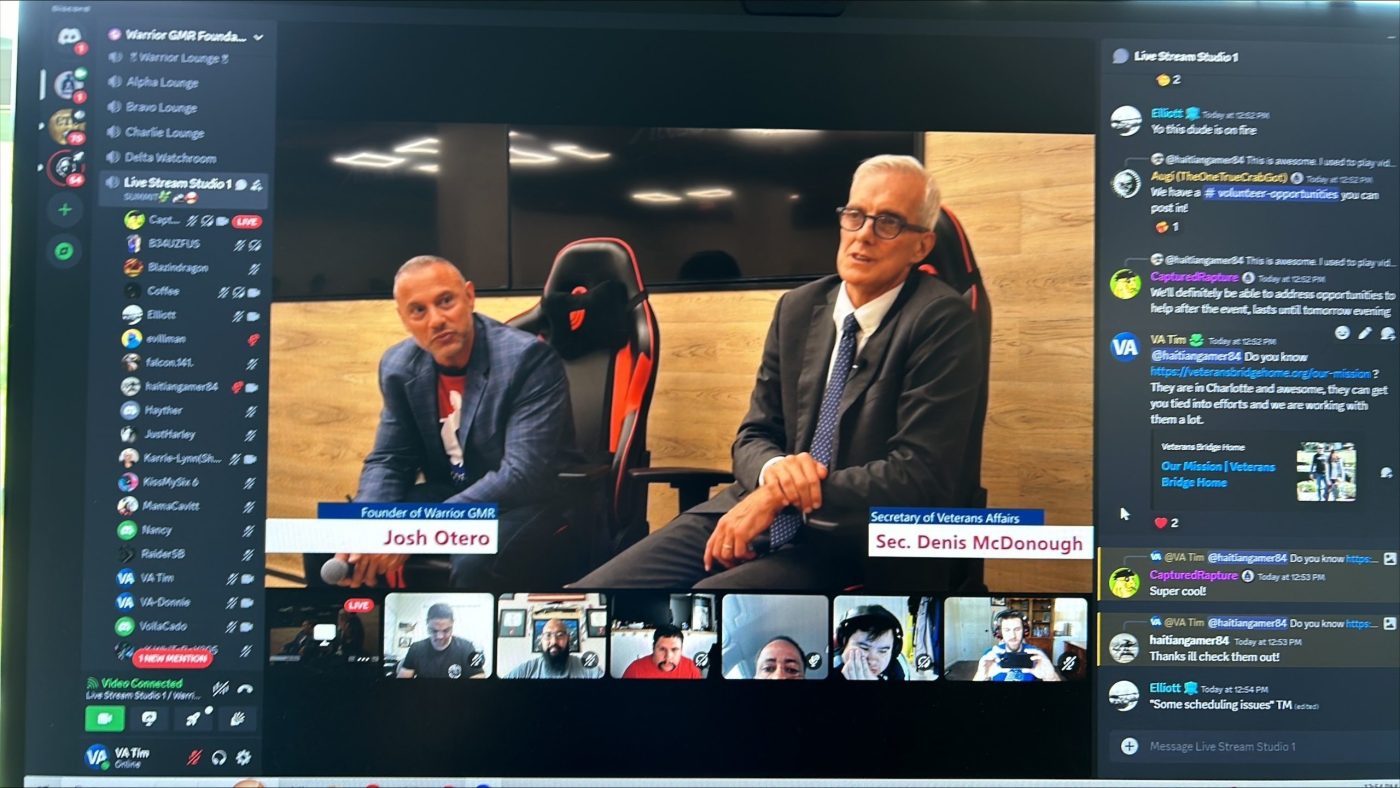On most days, the government reports that there are some 10 million job openings in the U.S., with leaders from businesses in a variety of industries reporting a struggle to find workers.
But in their efforts to find workers, are employers tapping all of the available talent pools? Bob Hogan—founder and CEO of Chicago-based Bridge My Return, a tech-enabled military hiring platform—doesn’t think so.
In fact, Hogan said the under-employment of Veterans is far greater than in the general population, and it’s not going away any time soon.
“We’re not talking about (Veteran) unemployment; that tends to mirror the general population whether times are good or bad,” said Hogan, a graduate of Notre Dame. “Underemployment… is always far worse whether times are good or bad.
“There’s a lot of goodwill that employers have toward hiring military talent. But despite all that goodwill, Veterans are not experiencing private sector success at acceptable levels,” Hogan added. “There are consequences to this. If this is what awaits Veterans—remember, it’s an all-volunteer military—when they get out, who’s going to want to go in?”
Hogan talked about the issue during a webinar, “Hiring Military Talent: Challenges and Opportunities,” presented by the National Association of Business Resources in partnership with the Best and Brightest Programs, Corp! Magazine and MichBusiness.
The folks at Bridge My Return have done a deeper dive into why Veterans are struggling to get hired. Hogan believes they’ve discovered some reasons:
- Stereotyping. There’s a certain amount of stereotyping, or pigeonholing, going on. Potential employers are saying Veterans should stick to the same careers they had in the military.
According to Hogan, that’s the advice being given and that’s the advice being heeded. But he sees “a couple of problems” with that.
“One, if that was your job in the Army, (but) you know a whole lot more than (that),” he said. “Second, it doesn’t address the fact that 70% of the people coming out of the military don’t want to do what they did in the military.”
- Skill misunderstanding. Service members, particularly enlisted members, have trouble communicating their military skills and experiences into a language those in the private sector can understand.
“But the private sector has an equally difficult time making that translation in the other direction,” Hogan said. “Therein lies the impasse.”
- Acclimation difficulty. “It’s real. It’s like a principle of physics or chemistry,” Hogan said. “Acclimation difficulty—transition—is hard. It has no biases. It doesn’t matter if you’re a woman or a man, or what the color of your skin is, or what rank you attained, or your education level or how old you are—it’s just hard.”
Businesses that decline to hire Veterans are missing out on a pretty big talent pool. According to statistics from Statista, there are:
- 1.3 million men and women serving on active duty globally.
- Some 16% of them are women, and that figure is climbing.
- Active-duty totals by branch:
- Army – 482,000Navy – 343,000Marine Corps – 179,000Air Force – 328,000Coast Guard – 41,000
- Space Force – 600
- There are a little more than 800,000 National Guardsmen and Reservists.
- Less than 10% of the current population has served in the military.
- The Army invests up to $73,000 in each person who completes basic training. That includes:
- A lot of training and schools.
- Real-life experience and mentorship following training.
- Leadership courses required with each promotion.
- 78% have some sort of security clearance and background investigation.
According to statistics completed by Bridge My Return (BMR), there are about 200,000 to 250,000 service members that transition each year, 70% of whom do not want to do the same job they did in the military.
Of the approximately 20 million Veterans in the United States, according to BMR, some 2 million are women and some 5 million are active or passive job seekers. When you add their spouses/caregivers, that total jumps to some 7.5 million.
The current labor market is such that companies of all sizes are challenged to find the talent they seek in the timeframe they have, Hogan said. “They’re going to have to tap into untapped pools of talent. We would argue that military talent sits atop that list of untapped pools of talent.”
The future of work trends, beyond automation, robotics and AI, is going to mean upskilling and re-skilling of the labor force.
That’s right in the wheelhouse of Veterans.
“Military members have been trained to be trained,” Hogan said. “They don’t just accept training. They expect it, and when they get it, they devour it.”
Diversity, equity and inclusion programs are also at the forefront of the business model for many businesses. And the military, Hogan points out, is the “most diverse demographic in the country.”
“All three of these things—current labor market challenges, future of work trends and pursuit of DEIB—are happening at the same time,” he said. “They favor both the military job seeker and those who seek to hire.
So is the juice worth the squeeze? Hogan believes it is.
First of all, there’s the tax benefit. The Work Opportunity Tax Credit is a Federal tax credit available to employers for hiring and employing individuals from certain targeted groups that have faced major barriers to employment. That list includes Veterans.
But that, at least in Hogan’s opinion, is the smallest of all the benefits to swimming in the Veteran talent pool. There are other cultural benefits he believes are more important:
- Increased productivity. Two keys that drive productivity are work ethic and teamwork. “Veterans really bring those traits to the table in spades,” Hogan said. “That drives productivity.”
- Lower turnover rate. If a person is in a position that doesn’t challenge them enough and doesn’t pay them enough and is with an employer that doesn’t “get” them, they’re going to experience turnover. That’s what’s happened.
“But if you get that right, if you get them in the right job, and it’s paying them fair compensation, and it’s an employer who understands them… their loyalty and their commitment takes over,” Hogan said. “That translates into a lower turnover rate. As HR professionals, you know the benefits of reducing turnover.”
- Leadership and management. This isn’t just the officer level, there are a lot of mid-level enlisted service members who have significant experience leading teams. “They could be teams in combat,” Hogan said. “There’s also a lot of those mid-level enlisted folks who have management responsibility managing huge amounts of materials, huge amounts of financial assets.
“If you’re looking to hire promotable people, this could be especially useful to employers who are looking to promote from within and really tapping into this treasure trove of humble leaders,” he added.
- Specialized training: There are certain roles in the military that have highly defined specialties: logistics, engineering, IT… there are a lot of folks in those roles who can make major contributions in the private sector.
- Problem-solving, decision-making, ability to improvise. “Their ability to improvise, their ability to adapt to dynamic and high-pressure situations is something they bring to the table,” he said.
- Trustworthiness, honesty, attention to detail. Many Veterans have high-level security clearances and all are trained to meet the highest standards when it comes to ethics, safety and other organizational imperatives.
- Global perspectives. Many of these members have experience working with international teams, with allies around the world. “So they bring that world view, and again, operating in a globalized economy, that’s of value to businesses,” Hogan pointed out.
- Eagerness to grow, adaptability, versatility. (Veterans) want to learn, they devour training, and they’re adaptable and versatile, Hogan said. “A small employer looks for things like dependability, people who show up ready to work. They look for versatility. There’s a lot of that in the military,” he said. “Today’s military is about small units, so a small company with that type of opportunity will really resonate with a lot of people within the military community.”
Being a military-ready company carries additional benefits with image, both internally and externally.
“People feel really good about what you’re doing in terms of bringing miliary talent into the organization and doing it for all the right reasons,” Hogan said.
So there’s a large cadre of businesses struggling to find employees, and a deep talent pool of Veterans having a hard time getting hired. What does it take to get them together? Hogan has a list:
- A serious jobseeker. “It’s not going to happen without that.”
- A military-ready employer.
- A champion on the employer side. “You need a champion on that side… an individual who’s really passionate about this.”
“There are organizations that have enthusiastic executives who support the initiative,” Hogan said. “They have an understanding of the business case and a willingness to invest in people who have the right behaviors.
“They embrace skills and competencies-based hiring versus functional experience-based hiring,” he added. “It’s what you bring to the table rather than how long you sat in the chair.”
- Technology to serve as the connective tissue between the jobseeker and the talent seeker like Bridge My Return has built.
- A human touch, a little bit of TLC.
“It’s no longer enough to call Veterans heroes,” Hogan said. “It’s time to look at them as assets. It’s no longer enough to thank them for their service, it’s time to hire them for their talents.”
Topics in this story
Link Disclaimer
This page includes links to other websites outside our control and jurisdiction. VA is not responsible for the privacy practices or the content of non-VA Web sites. We encourage you to review the privacy policy or terms and conditions of those sites to fully understand what information is collected and how it is used.
Statement of Endorsement
Reference herein to any specific commercial products, process, or service by trade name, trademark, manufacturer, or otherwise, does not necessarily constitute or imply its endorsement, recommendation, or favoring by the United States Government, and shall not be used for advertising or product endorsement purposes.
More Stories
Each week, we receive job announcements from employers and employment websites—including RallyPoint, RecruitMilitary, VetJobs and HireMilitary—looking to hire Veterans. This post contains links to job listings for the week of July 22, 2024. Each week, we’ll continue to post relevant and timely listings as we receive them, and for the locations listed.
VA hosted its second virtual regional Veterans Experience Action Center (VEAC) June 11-13 as part of a series targeting recently separated Veterans and military members nearing transition out of the armed services.
VA Secretary Denis McDonough spoke to Veteran gamers at the Warrior GMR Mental Health and Gaming Summit July 12 in Washington, D.C.









Agree to search all talent pools, but far from reality. Can’t even get the VA to recognize merit. How would you expect the civilian sector to do so.
After I read the story , I did not understand that much but I love those those messages :
– It what you bring to the table rather than how long you sat in the chair .
– it time to look them as asset’s .. It no longer enough to thank them for service.. It’s time to hire them for their TALENT …